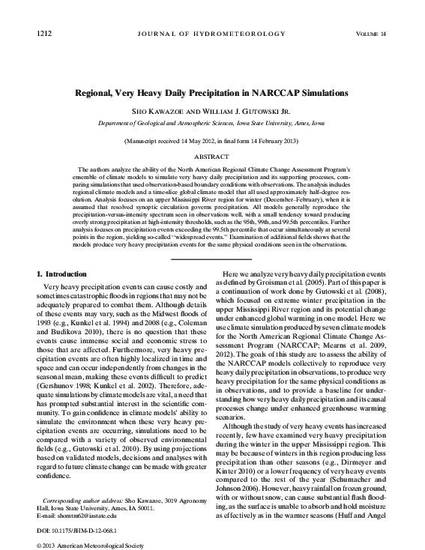
The authors analyze the ability of the North American Regional Climate Change Assessment Program's ensemble of climate models to simulate very heavy daily precipitation and its supporting processes, comparing simulations that used observation-based boundary conditions with observations. The analysis includes regional climate models and a time-slice global climate model that all used approximately half-degree resolution. Analysis focuses on an upper Mississippi River region for winter (December–February), when it is assumed that resolved synoptic circulation governs precipitation. All models generally reproduce the precipitation-versus-intensity spectrum seen in observations well, with a small tendency toward producing overly strong precipitation at high-intensity thresholds, such as the 95th, 99th, and 99.5th percentiles. Further analysis focuses on precipitation events exceeding the 99.5th percentile that occur simultaneously at several points in the region, yielding so-called “widespread events.” Examination of additional fields shows that the models produce very heavy precipitation events for the same physical conditions seen in the observations.
Available at: http://works.bepress.com/william-gutowski/24/

This article is from Journal of Hydrometeorology 14 (2013): 1212–1227, doi:10.1175/JHM-D-12-068.1. Posted with permission.